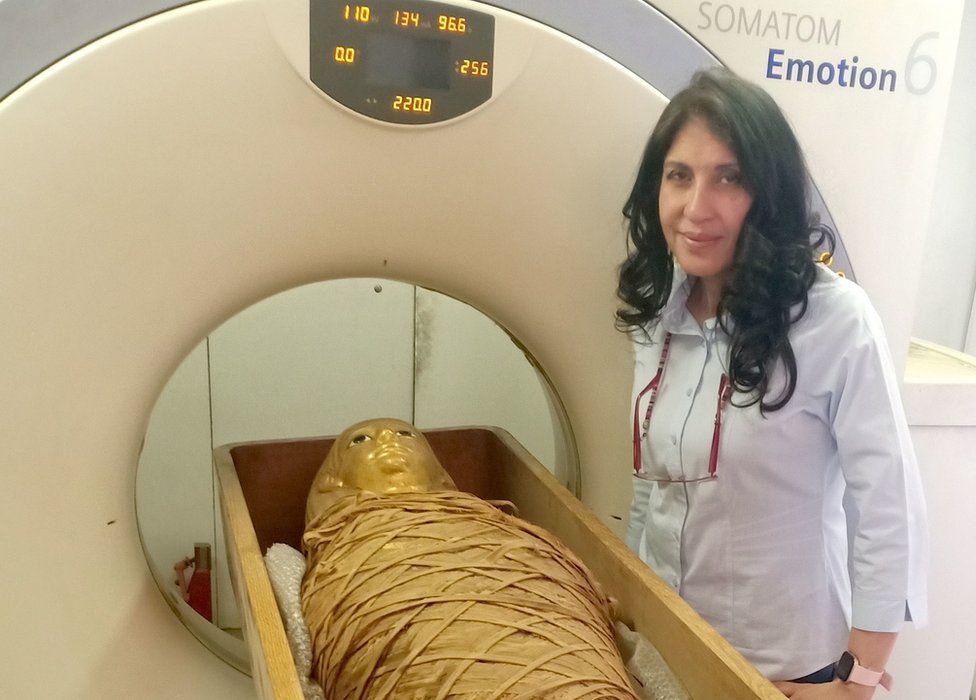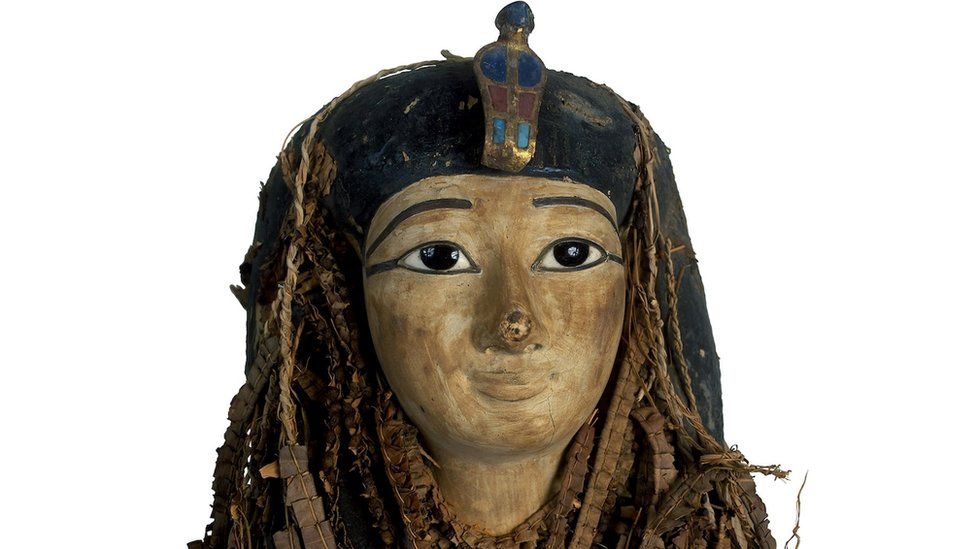The mummified body of an ancient Egyptian pharaoh has been studied for the first time in millennia after being digitally "unwrapped".
The mummy of Amenhotep I, who ruled from 1525 to 1504 BC, was found at a site in Deir el-Bahari 140 years ago.
But archaeologists have refrained from opening it in order to preserve the exquisite face mask and bandages.
Computed tomography (CT) scans have now revealed previously unknown information about the pharaoh and his burial.
Dr Sahar Saleem, professor of radiology at Cairo University and lead author of the study published in the journal Frontiers in Medicine, said they showed Amenhotep I was about 35 years old when he died.

"He was approximately 169cm (5ft 6in) tall, circumcised, and had good teeth. Within his wrappings, he wore 30 amulets and a unique golden girdle with gold beads," she told PA Media.
"Amenhotep I seems to have physically resembled his father: he had a narrow chin, a small narrow nose, curly hair, and mildly protruding upper teeth."
However, Dr Saleem said they did not observe any wounds or disfigurement due to disease that would allow them to give a cause of death.
The researchers were able to gain insights about the mummification and burial of Amenhotep, who was the second king of the 18th Dynasty, including that he was the first pharaoh to have his forearms folded across his chest and that, unusually, his brain was not removed.
They also concluded that his mummy was "lovingly repaired" by priests of the 21st Dynasty, which ruled about four centuries after this death.

The scans showed that the mummy suffered from multiple post-mortem injuries that were likely to have been inflicted by grave robbers
They also showed that the priests fixed the detached head and neck to the body with a resin-treated linen band, covered a defect in the abdominal wall with a band and placed two amulets beneath, and wrapped the detached left arm to the body.
Dr Saleem said the jewellery and amulets seen in the scans disproved theories that the priests might have removed them for use by later pharaohs.
The mummy of Amenhotep I was reburied by the priests in the Deir el-Bahari Royal Cache, a complex of tombs and temples near Luxor, to keep them safe.
Latest Stories
-
National Cathedral: CHRAJ recommends investigation, contract cancellation, possible prosecution
1 min -
Dr James Orleans-Lindsay wins Man of the Year at 9th EMY Africa Awards
3 mins -
Medical Council to enforce specialist distribution nationwide
33 mins -
Fire guts old Fadama market, man reportedly loses GHC800,000
37 mins -
Nacee bemoans low performance fees for gospel artistes
38 mins -
We don’t operate investment platform – GNPC
55 mins -
Ghana Fact-checking Coalition condemns disinformation on voting by Wontumi FM broadcaster
56 mins -
IFRS 17 will augment and accelerate NIC’s efforts to implement risk-based capital – Deloitte
59 mins -
IFRS 17 is one of biggest changes to financial reporting standards in insurance industry – Deloitte
1 hour -
Enimil Ashon: Whose polls do you believe: ‘Global Info or Prof Sarpong?
1 hour -
Ghana Climate Innovation Centre welcomes 25 businesses into Cohort 10
1 hour -
ADB will continue to enhance customer value and service experience – Managing Director
1 hour -
Colour Cure Exhibition highlights art’s role in healing and advocacy
1 hour -
GPL 2024/25: Aduana FC sack coach Yaw Acheampong after poor run
1 hour -
John Dumelo pays ¢10,400 in outstanding fees for visually impaired law student facing deferral
1 hour

